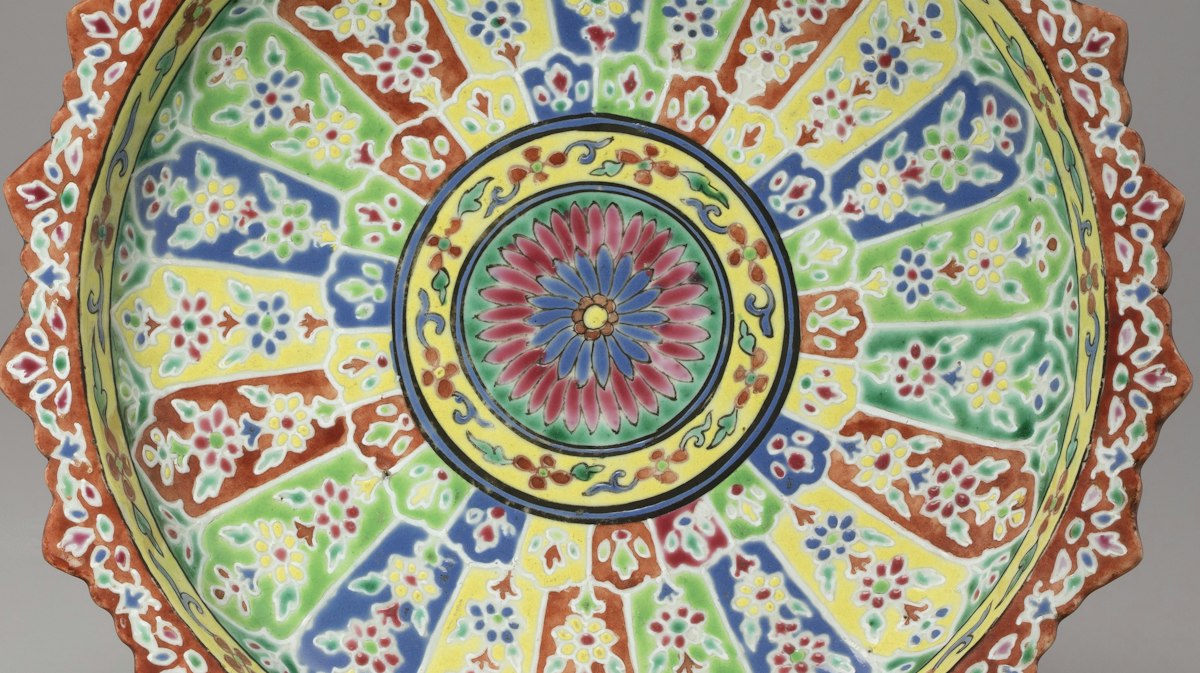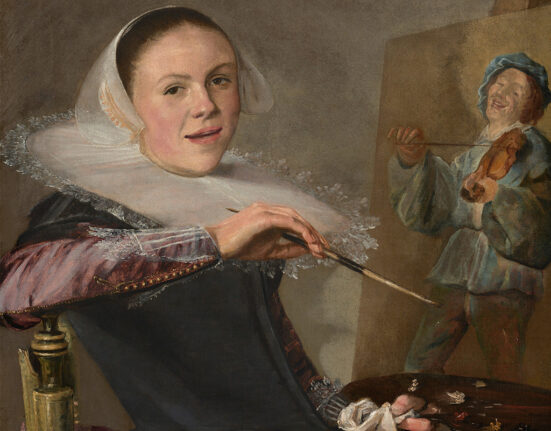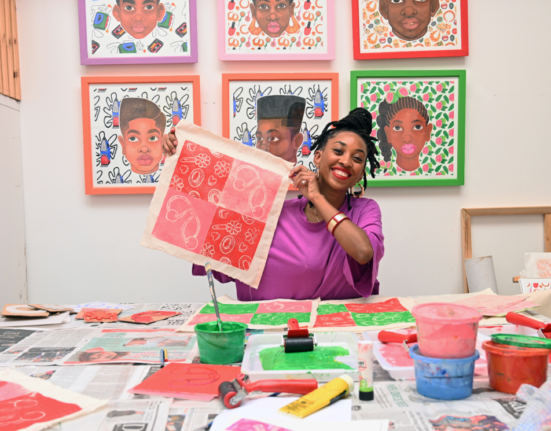Bencharong, literally meaning “five-colored” in Thai, is an enameled type of porcelain with hand-painted patterns.
By <a href=”https://www.artic.edu/authors/199/nicolas-revire” rel=”author”>Nicolas Revire</a>
Despite its name, it more commonly uses three to eight colors. As a unique class of Chinese export ware, Bencharong porcelain pieces were initially produced in or near Jingdezhen in southern China for Siamese royalty and nobility (from present-day Thailand) and gradually also for the wealthy merchant class of 19th-century Bangkok. They were adorned with traditional decorative shapes and repetitive geometric designs, usually flames or flowers, and celestial figures. Some are decorated in a style known as Lai Nam Thong, (“gold-washed pattern”) indicating their lavish inclusion of gold, most often as a background color to highlight painted designs.
These works from the Art Institute’s collection, acquired 100 years go, once belonged to a Norwegian naval officer named Theodor Peder Amundsen Ring (1866‒1932), an adventurer who went to sea in 1882 before moving to the Far East to work with the Chinese customs bureau.
Commander Theodor Peder Amundsen Ring, about 1906
Courtesy of Anne Kühner. Ring appears in full naval dress and as a benefactor to the newly independent state of Norway (1905).
Ring later moved to Siam—the former name of Thailand—during the reign of HM King Chulalongkorn (r. 1868‒1910) to serve in the Siamese Navy. He was one of the earliest and largest Western collectors of Bencharong wares at the time.
Siamese fayence has a distinctive style or individuality, being unpretentious in appearance but striking, and holding its own in the annals of the history of the art of crockery making.
—Commander Theodor Peder Amundsen Ring
Back home in Oslo, Ring donated a large portion of Bencharong wares to two local museums in 1904. We learn from his diaries that he traveled to New York in 1912 for “business purposes,” likely to visit some public museums, dealers, or private collectors in order to sell Bencharong wares. Whether or not Ring ever made it to Chicago in person is unknown. However, ten years later, a certain T. Mygdal, a prominent local pharmacist and dealer in photographic supplies, contacted the Art Institute in June 1922 to draw the museum’s attention to a large and “exceedingly interesting collection of Siamese pottery” available for sale in Europe, at the home of the owner in Norway. Photographs of over 200 pieces were shared with John Arthur MacLean (1879‒1964), then assistant director of the Art Institute and first curator of Asian art.
John Arthur MacLean, n.d.
Throughout his career, MacLean was instrumental in establishing some of the foremost collections of Asian art in the U.S. and bringing public consciousness to Asian art and culture.
The collection was deemed, in advance, “the best of the kind in America.” Discussion ensued for several weeks, and it was finally agreed that the whole lot would be sent on loan and shipped from Oslo (formerly known as Christiania) to Chicago later that year for purchase consideration by the museum. At the time, the Metropolitan Museum of Art in New York City had already bought a similar group of Bencharong wares from Ring. Having been previously disappointed by European institutions, it was thought that “America must be a better market than in Europe” for the sale and display of Ring’s prestigious Siamese porcelain collection.
Eventually, a collection of 235 Bencharong pieces arrived at the Art Institute on loan in November 1922. Part of it was to be exhibited in 1923 to celebrate the opening of the new terrace building dedicated to Asian art (the new department had just been created in 1921). It was further agreed that the Art Institute would have the first pick and assist Ring in placing the rest of the collection for sale in other museums or private collections in North America if needed.
In February 1923, MacLean wrote a last letter to Mygdal expressing that he was able to pick out several pieces of “real artistic merit” to be displayed at the inaugural exhibition; he further recommended a group of Bencharong wares to be considered for purchase by the Art Institute. In May 1923, director Robert Bartholow Harshe (1879–1938) confirmed the arrangement to exhibit the loaned collection from Ring at the Art Institute throughout the summer of the same year.
Robert Bartholow Harshe, 1937
Harshe served as director of the museum from 1921–38. Notable among the exhibitions he curated is the Century of Progress exhibition of 1933–34.
Eventually, the executive committee approved the purchase of “a portion of the Ring collection of Siamese pottery, amounting to thirty pieces” in June 1923, a rich collection full of inventive and skillful design. It was, according to Ring, “acquired during a nine-year stay in Siam, from 1897 to 1906, and most of it in Bangkok.” A brief note around this new acquisition would be published in the Bulletin of the Art Institute of Chicago in 1924.
Bencharong porcelain has become popular these days, particularly for collectors in Thailand and Southeast Asia. The significance of the Ring collection from Siam has only been brought to light recently in the West through renewed scholarly attention and a major exhibition in Oslo. Thanks to well-preserved archives kept at the Art Institute, as we reach the centenary of this significant acquisition in Chicago, we are now able to understand and celebrate the full extent of this fascinating collection in North America.
—Nicolas Revire, Daniel F. and Ada L. Rice Postdoctoral Fellow, Arts of Asia and Curatorial Documentation and Research
See Bencharong works on view in Gallery 142.
Explore works from the Ring Collection.
Resources
Read about the Ring acquisition in the 1924 Bulletin of the Art Institute of Chicago and a letter about Siamese Fayence (probably written by Theodor Ring, about 1922).
Learn more about our Asian art collection and Robert Bartholow Harshe.
Topics
- Collection
- Museum History







